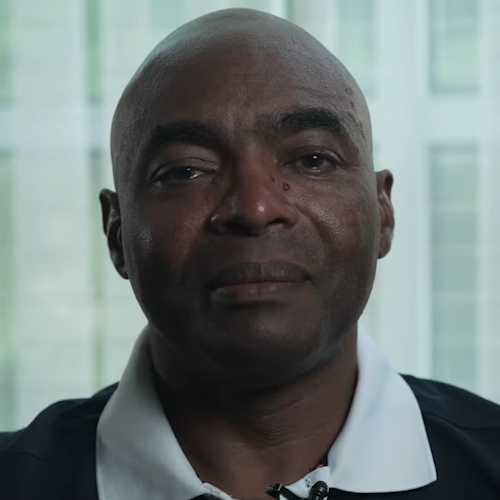Prostate Cancer Patient Stories
Prostate cancer is the one of the most common cancers and also the second leading cause of cancer death for men in the the United States1.
Explore the in-depth stories from our prostate cancer patients, who share their stories of symptoms, diagnosis, and treatment in-depth. We also feature medical experts, like urological oncologists, and stories from caregivers.
Editor’s Note: Leading experts and organizations like the American Urological Association strongly recommend that low-risk prostate cancer patients opt into active surveillance instead of any treatment.
“For patients with low-risk prostate cancer, clinicians should recommend active surveillance as the preferred management option. (Strong Recommendation; Evidence Level: Grade A)”
AUA/ASTRO Guideline (2022)
For general information, symptoms, and side effects, visit our prostate cancer overview page.






Spotlight: Al Roker
As a celebrated TV personality, journalist, meteorologist, and author, Al Roker is a familiar face for so many of us. That’s why when Al announced his prostate cancer diagnosis at the end of 2020, it created many waves and galvanized a large outpouring of support from around the world.
In this interview with The Patient Story founder, Stephanie Chuang, Al opens up about his patient experience and especially about how important it is for men to get screened for prostate cancer through the PSA test (and digital exam).
He’s also passionate and vocal about the importance of African-American men being vigilant in particular, as they are disproportionately affected by prostate cancer.
Patient Stories
Our prostate cancer patients share their in-depth experiences of going through treatment, from first symptoms through navigating life outside cancer.
Rob M., Prostate Cancer, Stage 4
Symptoms: Burning sensation while urinating, erectile dysfunction
Treatments: Surgeries (radical prostatectomy, artificial urinary sphincter to address incontinence, penile prosthesis), radiation therapy (EBRT), hormone therapy (androgen deprivation therapy or ADT)
John B., Prostate Cancer, Gleason 9, Stage 4A
Symptoms: Nocturia (frequent urination at night), weak stream of urine
Treatments: Surgery (prostatectomy), hormone therapy (androgen deprivation therapy), radiation
Eve G., Prostate Cancer, Gleason 9
Symptom: None; elevated PSA levels detected during annual physicals
Treatments: Surgeries (robot-assisted laparoscopic prostatectomy & bilateral orchiectomy), radiation, hormone therapy
Lonnie V., Prostate Cancer, Stage 4
Symptoms: Urination issues, general body pain, severe lower body pain
Treatments: Hormone therapy, targeted therapy (through clinical trial), radiation
Paul G., Prostate Cancer, Gleason 7
Symptom: None; elevated PSA levels
Treatments: Prostatectomy (surgery), radiation, hormone therapy
Tim J., Prostate Cancer, Stage 1
Symptom: None; elevated PSA levels
Treatments: Prostatectomy (surgery)
Mark K., Prostate Cancer, Stage 4
Symptom: Inability to walk
Treatments: Chemotherapy, monthly injection for lungs
Mical R., Prostate Cancer, Stage 2
Symptom: None; elevated PSA level detected at routine physical
Treatment: Radical prostatectomy (surgery)
Jeffrey P., Prostate Cancer, Gleason 7
Symptom: None; routine PSA test, then IsoPSA test
Treatment: Laparoscopic prostatectomy
Theo W., Prostate Cancer, Gleason 7
Symptom: None; elevated PSA level of 72
Treatments: Surgery, radiation
Dennis G., Prostate Cancer, Gleason 9 (Contained)
Symptoms: Urinating more frequently middle of night, slower urine flow
Treatments: Radical prostatectomy (surgery), salvage radiation, hormone therapy (Lupron)
Bruce M., Prostate Cancer, Stage 4A, Gleason 8/9
Symptom: Urination changes
Treatments: Radical prostatectomy (surgery), salvage radiation, hormone therapy (Casodex & Lupron)
Al Roker, Prostate Cancer, Gleason 7+, Aggressive
Symptom: None; elevated PSA level caught at routine physical
Treatment: Radical prostatectomy (surgery)
Steve R., Prostate Cancer, Stage 4, Gleason 6
Symptom: Rising PSA level
Treatments: IMRT (radiation therapy), brachytherapy, surgery, and lutetium-177
Clarence S., Prostate Cancer, Low Gleason Score
Symptom: None; fluctuating PSA levels
Treatment: Radical prostatectomy (surgery)
Oncologists & Experts
Leanne Burnham, PhD
Role: Project Coordinator for Community Work, Assistant Research Professor
Focus: Prostate cancer
Provider: City of Hope
Dr. Christopher Weight, M.D.
Role: Center Director Urologic Oncology
Focus: Urological oncology, including kidney, prostate, bladder cancers
Provider: Cleveland Clinic
Caregiver Stories
Lisa Matthews, Spouse of Prostate Cancer Patient
"It’s just that tough. It’s scary and difficult, and you need to give each other some space, but also give each other that support and love."
rEFERENCES
1. Prostate Cancer-Patient Version. National Cancer Institute. https://www.cancer.gov/types/prostate. Accessed December 17, 2020.
2. Basic Information About Prostate Cancer. CDC. https://www.cdc.gov/cancer/prostate/basic_info/index.htm. Accessed December 17, 2020.
3. Final Recommendation Statement, Prostate Cancer: Screening. USPSTF. https://www.uspreventiveservicestaskforce.org/uspstf/recommendation/prostate-cancer-screening. Accessed December 17, 2020.













